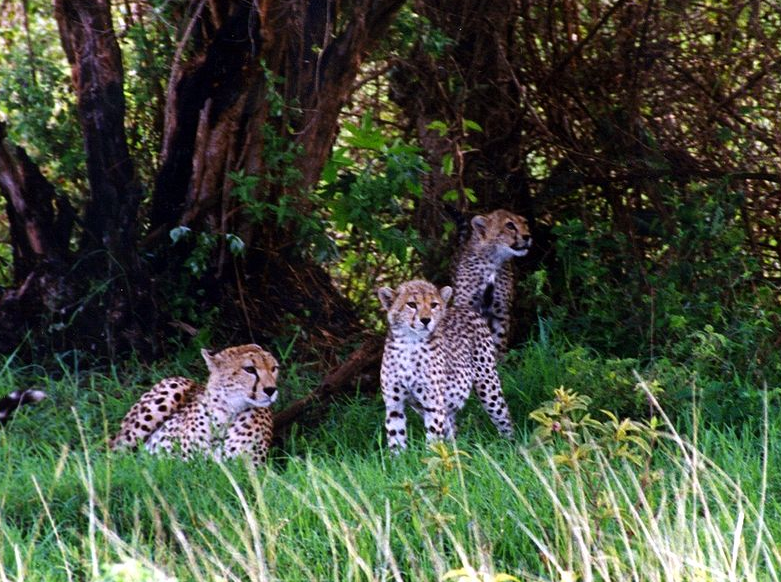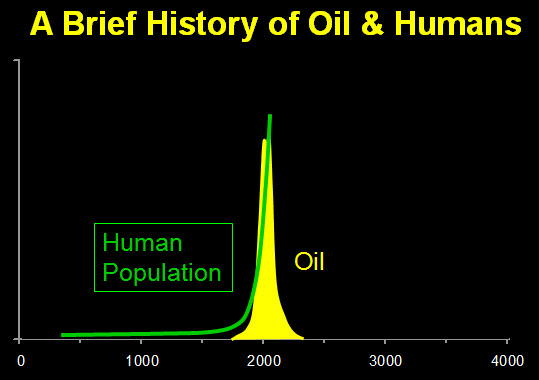Richard Ha writes:
Every organism, organization and even civilization needs surplus energy or it goes extinct.
When a mama cheetah catches an antelope, for instance, she needs to get enough energy from consuming that antelope to take care of her kids.
Let’s say all the antelopes are very skinny, and the energy she gets from eating a skinny antelope only gives her enough energy to make one more sprint, and that’s all.
That would be described as an "energy return on investment," an EROI, ratio of 1-1. She has no excess energy available to do anything but catch her next meal. That would be a very scary existence: She would have to catch an antelope on every single sprint, or her species would go extinct.
But if the antelopes got fatter, and the cheetah could make two sprints from eating one antelopes, we would call this an EROI of 2-1.
When the cheetah could make five runs from eating one antelope, things would be starting to look better (EROI 5-1). She would have energy left over to do more than just survive. She could spend time washing and playing with the kids.
At an EROI of 10 to 1, she could send the kids to grad school; things would be wonderful.
At an EROI of 30 to 1, the cheetah population would start to grow. The cheetahs would move into condominiums and take vacations in Hawai‘i.
So what does this mean in real life? Here’s some history.
In the 1930s, we could extract 100 barrels of oil from the ground by using the energy we got from one barrel of oil. That’s an EROI of 100-1.
By 1970, we were only getting 30 barrels of oil from the use of one barrel (an EROI of 30-1).
And in 2013, it’s around 10 barrels of oil (EROI 10-1).
Tar sands is around 5-1.
And biofuels are less than 3-1. Some biofuels (for example, alcohol from corn) are barely more than 1-1. You can see why putting our money and efforts into biofuels hardly makes sense.
Especially when you realize that geothermal, as we have in Hawai‘i, appears to have an EROI ratio of 11-1. It’s also significant to note that this rate won’t change anytime soon. The Big Island will be over the “hot spot,” which creates our geothermal conditions, for 500,000 to 1 million years.
Here is an article about the minimum EROI a sustainable society must have, by Charles A.S. Hall, Stephen Balogh and David J. R. Murphy.
What don’t we understand about this?



Richard,
This is a nice succinct intro to EROI. I’ve been thinking more about Hawai’i ever since Dr. Hall took his trip out there.
As you are well aware (but perhaps for the sake of others I’ll recap) Hawai’i has no domestic sources of fossil fuels and thus 94% of the energy consumed on the island must be imported. To pay for these imports, island residents generate revenue through agricultural, industrial, and commercial production. In effect, Hawaiians collectively trade agricultural products, (e.g. coffee), light manufacturing (e.g. food processing, clothing) and services, (e.g. access to beaches, tourism and financial services) for imported energy, mainly oil. All of these means of economic production have an energy cost. From this information one can calculate an EROI for imported fuels (EROI-imp) for Hawai’i by measuring the energy imported / amount of energy consumed in the economy to obtain that energy. [Hall, Cleveland, and Kauffmann (1986) and Palcher et al. (2008) undertook similar calculations previously for the U.S. as a whole.]
Method for calculating the EROI for imported fuels:
EROI-imp is a function of the price of fuel and the energy intensity of the economy.
If a state or nation that is mainly dependent on service industries for economic production requires on average 5 MJ on average to generate a dollar’s worth of production, the energy intensity is 5 MJ/$. A barrel of oil contains 6,119 MJ of energy. At $50/barrel, the energy “intensity” of a barrel of oil is 122 MJ/$. Therefore, the EROI for imported oil is calculated as:
EROI= (Energy IN)/(Energy OUT)
EROI(imported oil)=(Energy intensity of oil)/(Energy intensity of the economy)
EROI (imported oil) =(122 MJ/$)/(5 MJ/$)=24:1
This means for every MJ of energy consumed in the service industries, enough money can be generated to purchase 24 MJ of imported oil. Or conversely, 1 out of 24 available units of energy must be consumed to secure continued energy imports. Only the remaining 23 units are surplus energy available “net” to society. More energy intensive economies (with high proportions of agriculture or heavy industry) would have a lower EROI for imported fuels. Likewise, higher oil prices would also serve to lower this ratio.
Therefore it may be more relevant and important to compare alternative energy projects (such as the geothermal electric plants you mention above) to the EROI for imported fuels in Hawai’i (and the projected changes to that ratio over time) than to the EROI for oil production in the US or world as a whole.
=======
I’ve been developing a research proposal to examine of the current state of Hawaiian energy consumption and to analyze alternative energy recommendations using this metric (and assessment methods developed in the field of industrial ecology). The objectives of the study are to answer the following research questions: (1) What is the current EROI for imported fuels in Hawai’i and how has it changed over time? (2) How will proposed changes in fuel mix and a shift to domestically produced renewable fuels affect Hawaii’s overall EROI (domestic + imported)? (3) Alternatively, how might increases in the price of oil or changes in tourism spending affect the EROI of imported oil? (4) How will the proposed changes to the Hawaiian energy mix affect its material stocks and flows?
If these ideas interest you and you’d like to hear more about it, or you know of any local researchers who might be interested in pursuing such an analysis with me, please contact me via email or through Dr. Hall.
Best,
Stephen Balogh
p.s. thanks for the plug for our paper